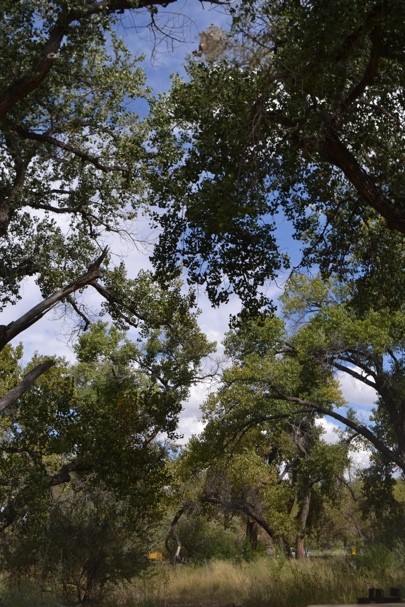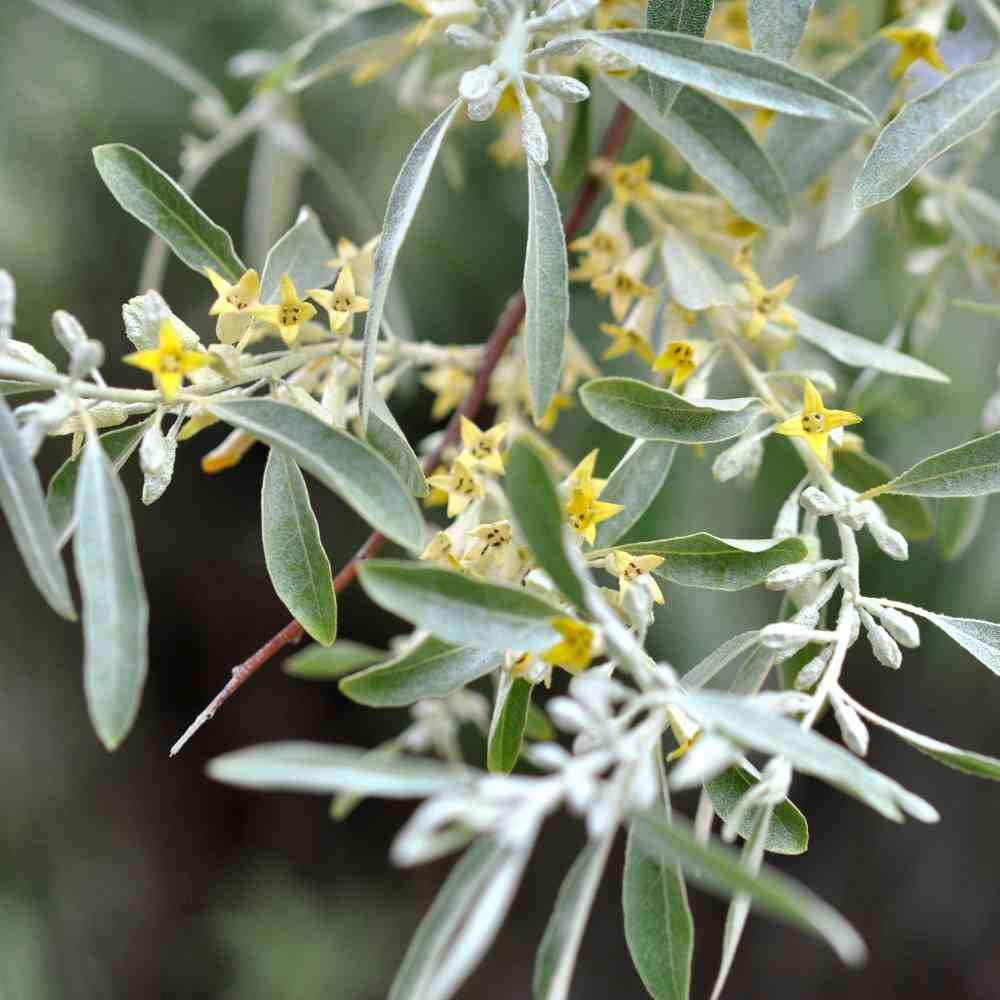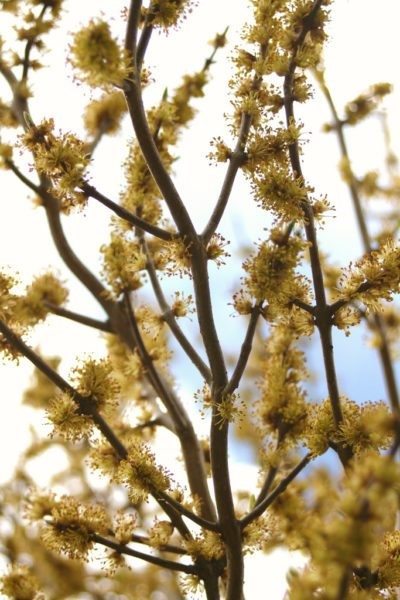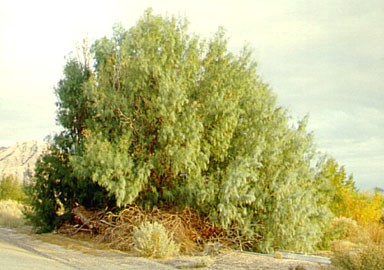Populus deltoides ssp. wislizenii, Rio Grande Cottonwood
The Rio Grande cottonwood tree is a popular tree species native to New Mexico that can
grow
up to 100 feet tall. Since this species only grows near the river, it is highly
associated
with water and arid-land ecosystems. Its survival highly depends on monsoon flooding
with its
proximity to the Bosque. Thus, this species is affected by climate change and urban
landscaping.
Additionally, it plays an important role in riparian ecological role as it provides food
and shelter
for the surrounding organisms.
Elaeagnus angustifolia, Russian olive
The Russian olive is an invasive species in the American Southwest as it originated in
southern
Europe & western Asia. It is a particular problem in New Mexico as this species prefer
riparian
zones and moist environments. It is a resilient, fast-growing tree identifiable by its
slivered
leaves and yellow flowers. The Russian olive consistently competes with other riparian
vegetation
and in addition to reducing natural fauna.
Forestiera pubescens var. pubescens, New Mexico Olive
The New Mexican olive, otherwise known as the desert olive, is a tree species native to New Mexico as it thrives in hot and sunny regions. Despite its preference for hot climates, it is often found in abundance near rivers and streams in riparian ecosystems. This tree is an essential part of our ecosystem as its fruits provide nutrients to riparian fauna. This species is very hardy and does not face any potential threats as it has no particular soil preferences and thrives in a multitude of biomes.
Tamarix chinensis, Saltcedar
The saltcedar is an invasive species all across the United States known for its small, flat leaves that resemble needles. Saltcedars are a particular threat to riparian areas as they alter soil composition, stream flow, and decrease microbial activity. In New Mexico, the impacts on stream flow are particularly harmful and the invasive aspect of this species is worsened by its spreading mechanisms, that mainly rely on annual river flooding.
Sources
- "Field Guide for Managing Russian Olive in the Southwest". United States Department of Agriculture, USDA. Online: Link
- Teo Spengler."Forestiera Desert Olives: Information on Growing New Mexico Olive Trees". Gardening Know How. Online: Link
- "Field Guide for Managing Saltcedar in the Southwest". United State Department of Agriculture USDA. Online: Link
Image sources
- "Rio Grande cottonwood".(c) albuquerqueherbalism. Obtained from inaturalist.org. Online: Link
- Lazare Gagnidze. "Yellow-Flowered Russian Olive". Editor: Gaspard Lorthiois. Obtained from Nature & Garden. Online: Link
- John Randall."Tamarix Aphylla". The Nature Conservancy. Obtained from Texas Invasives. Online: Link
- Patrick Standish. Obtained from Garden Know How. Online: Link

Populus deltoides ssp. wislizenii, Rio Grande Cottonwood

Elaeagnus angustifolia, Russian olive

Forestiera pubescens var. pubescens, New Mexico Olive

Tamarix chinensis, Saltcedar